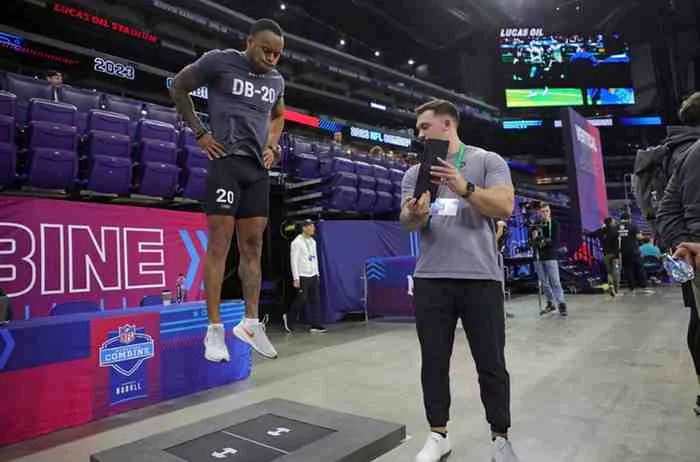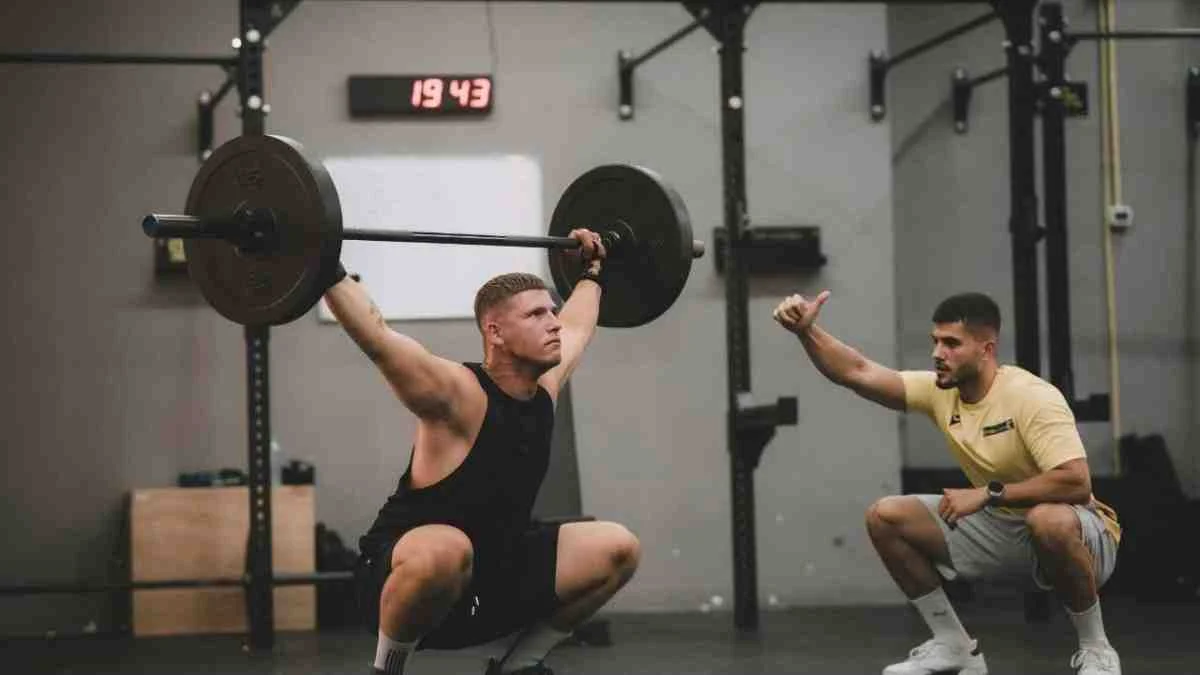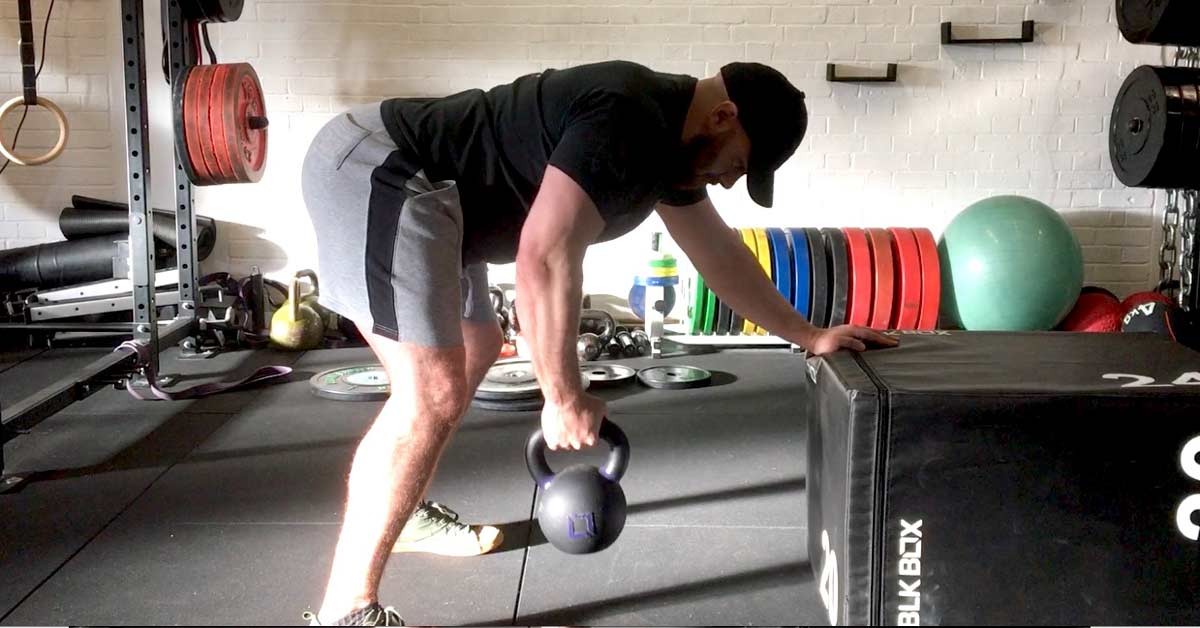
The upper back is often considered the hallmark of a truly strong athlete. I’ve seen heavy back training referred to by some as armor building, bulletproofing, and other similar protective sentiments. While it plays that role terrifically well, it can also be a performance driver in athletes whose sports require a strong back and/or find back strength a limiting factor.
Back strength is not just for GPP and youth athletes. The problem stems from the fact that most of what we know about back training comes from either bodybuilders or physiotherapists. Disentangling back training from notions of “health” and/or “size” can be tricky.
Heavy back training isn’t just armor building—it can also be a performance driver for some athletes, says @WSWayland. Share on XStrength coaches don’t help much either, as they put the focus on training force projection in a largely sagittal anterior direction—pressing and squatting (including single leg work) rule the roost from an exercise consideration standpoint. This makes sense, as most athletes are about navigating the space in front of them. Upper back work is not forgotten, but it is often not loaded with the same intent or intensity.
Functional training has railroaded upper body pulling exercises into band flailing, contralateral and fractional plate-wielding abominations. These exercises are often regulated into the “necessary for structural balance” class of exercises. Meanwhile, athletes are still fed a steady diet of upper body presses if they are still pressing at all, and doing a lot of what is perceived as good for their “structural balance” although any study of push-pull intensities will suggest otherwise. I’m pretty sure old-school coaches did just fine pairing bench with bent-over rows in a 2:1 pull:push ratio and going about their day.
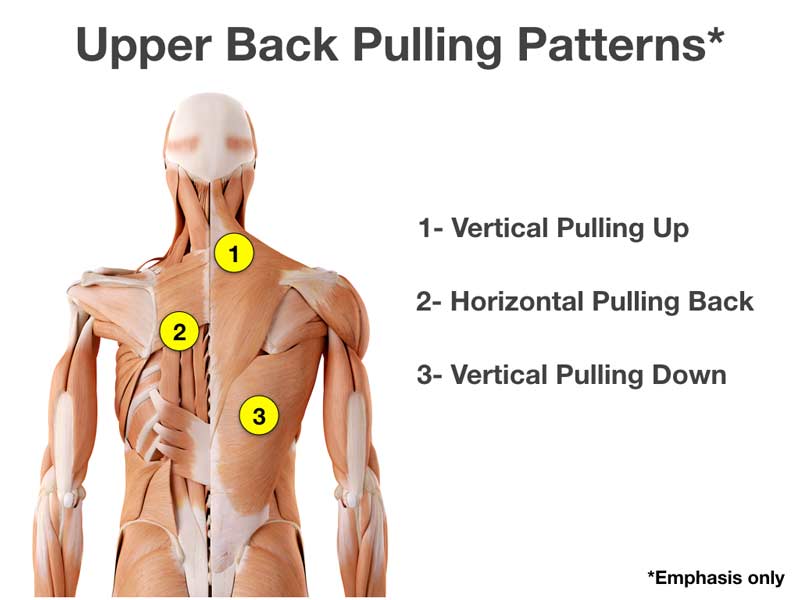
Some athletes—particularly combat athletes, athletes in “gi” sports (judo, sambo, jiujitsu, Cornish wrestling), and athletes participating in small watercraft sports or snows sports involving ski poles, for example—require low-velocity yielding and rapid ballistic or repetitive-type pulling. Of note are snatching type actions that involve a pulse or rapid contract/relax type action with mere milliseconds to establish a grip before the pull is initiated, which is a movement we rarely see in the weight room.
The other factor seems to be the connection with extremity strength in the hands in upper body pulling exercises and its seemingly subsequent relationship with full body strength. The ability to grip, pack, and brace as a common determinant of success in hinging and other lower body exercises is a relationship that most pragmatic strength coaches understand and explore. If we can’t organize the upper back/posterior chain under load, we will only see breakdown when we axially or anteriorly load the lower body.
Getting beyond the IYT shoulder exercises, bench chest-supported rows, and band pull-aparts, here is a selection of exercises I’ve found to be highly conducive to purposeful upper back training. This is by no means an exhaustive list, so you can surely add many more of your own.

Neutral Grip Lowering
Neutral grip lowering is a foundation of upper body pulling that we implement in our training programs. The ability to yield eccentrically in a neutral grip position is a fundamental skill that pays dividends in total body control above the pelvis. To quote Carl Valle’s “6 Sure-Fire Eccentric Exercises to Build (and Rebuild) Athletic Monsters: “Eccentric work is great for heavy athletes and weak athletes alike. An elite NFL lineman who has a poor strength to weight ratio or a young athlete who is starting from zero can see rapid improvements in pulling ability.”
As athletes advance w/neutral grip pull-ups, the quality of their #RDL and pressing patterns improve, says @WSWayland. Share on XNeutral grip seems to serve us better than an underhand or overhand grip, as most athletes naturally move through a larger ROM. The finish and start positions seem to be of a higher quality than the “body English” excuses for pull-ups we often see with an overhand grip. As athletes advance with neutral grip pull-ups, I always notice that the quality of their RDL and pressing patterns get better as much of the worked musculature assists and supports these movements.
Video 1. Ideally, the athlete keeps their rib cage down as they pull. Many athletes will tilt backward, arching and trying to turn neutral grip lowering into more of a rowing action than a vertical pulling one.
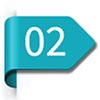
Oscillatory Rows
Oscillatory exercises attempt to manipulate the rapid contraction and relaxation relationships found in high-velocity movement. This manipulation of reciprocal inhibition is what separates studs from duds in an athletic sense.
You can assign oscillatory movements to just about any movement, but they really shine in the form of a single arm form. The athlete, however, has to focus on moving the load around 3-4 inches back and forth; a weaker/less-coordinated athlete will generally use a larger ROM, say 5-6 inches, to achieve the same effect due to them being more inefficient. The athlete must ensure they are not using perturbations from the torso to “cheat” so movement comes from the body and not the working limb. Done properly, the movement requires good bracing and scapular positioning.
Oscillatory rows come in two flavors: advantaged and disadvantaged. Much like the name suggests, advantaged are performed where limb lengths are mechanically at an advantage and disadvantaged are performed where the movement is at its most difficult mechanically. Apply both or either in a fashion that matches common sports positions. Advantaged positions are usual for activation and neural drive and make sense in peaking applications.
Video 2a and 2b. You can use extended oscillatory work as a GPP method to improve tissue tolerance; work periods can be 30 seconds. I employ these with grappling athletes using gi cloth or thick grip modifications.

Catch and Release Variations
The ability to rapidly accelerate and decelerate pulling actions is something we rarely see trained. Undoubtedly, the foundation of upper back strength is found in controlled heavy rowing and vertical pulling. What stands out as good GPP practice for back training in the off-season hangs around during peaking like a hangover. If we increase velocities anteriorly then it makes sense to also increase them posteriorly.
If we increase velocities anteriorly then it makes sense to also increase them posteriorly, says @WSWayland. Share on XAdvanced athletes need preparation for the rapid acceleration and deceleration that sport requires. This can take two forms, such as accelerating an external load concentrically as in snatching rows and decelerating rapidly as in catching rows.
Videos 3 and 4: Adding velocity components to the exercises dramatically changes the dynamics of the movement to add athleticism without being too cute. Rowing doesn’t have to be tacked on at the end of a workout or be overly vanilla—it deserves the same effort and thought behind it as other workout movements.
We can also implement bodyweight ballistic movements, as in some sports such as wrestling, grappling, and jacket sports (judo, jiujitsu, etc.) where the athlete may accelerate themselves. We can use bodyweight catch release rows, which I unashamedly stole from Keir Wenham-Flatt and have found work as an excellent pairing with clap push-ups for an explosive push/pull combination. The momentary ballistic nature of the movement means we can train high limb speeds combined with rapid deceleration at the bottom movement, getting a good two-for-one pairing.
Video 5. Bodyweight catch release rows require rapid acceleration of bodyweight. You can modify their difficulty simply by adjusting the height of the bar.

Banded Barbell Row
An understandable fondness exists in attaching accommodating resistance to movements involved in squat and press patterns for athletes as these actions dominate most sports. There is no reason why we can’t do this with upper body pulling either as a pull release (no eccentric) or straight reps. Usually, you can easily implement it by having the athlete loop a band over the bar and step into it.
Video 6. Eccentric-less training options are useful for athletes looking to train explosive pull or athletes that are injured and cannot tolerate deceleration.

Eccentric Single Arm Ring/Suspension Row
Suspension training with rows can be rather redundant for any athlete, especially if they have impressive strength-weight ratios, where the need for weighted vests and the like becomes a limitation. We can manipulate the variables to make this simple exercise much harder.
Pulling up with two arms and lowering with one makes it a great way to introduce single arm lowering without the limitation of a concentric single arm body weight row. Stabilizing on the eccentric single arm lowering is easier than stabilizing on a single arm concentric row. Occasionally, you will see athlete “collapse” at the bottom—not only is this dangerous, as the sudden jerking drop can loosen or damage suspension, but it also hurts the athlete. Encourage them to choose an angle that allows for full control of the movement.
Video 7. The classic 2 up and 1 down is a timeless option for strength coaches. Athletes using eccentric overload with rows can quickly and safely gain strength.

Eccentric and Isometric Single Arm KB or DB Rows
The meat and potatoes of upper back work are built from quality heavy single arm rowing using both eccentric and isometric contractions, which help build a robust and strong upper back. Single arm rows add a contralateral/cross-body element, especially if done as a three-point row with one arm braced and two feet on the floor. The key is to keep the non-focused movement elements as fast as possible; don’t waste energy on a slow eccentric when you trying to keep the quality of the isometric high.
Positioning is crucial here: Athletes need to focus on a “proud” position and resist letting the scapular roll forward and getting the traps involved. I encourage athletes to try to get the elbow back to the hip.
Video 8. Contractions don’t need to be uniform or isolated; they can be sequenced in ways that provide both overload and variation. Inserting isometric pulses also helps keep athletes alert and strict with technique.
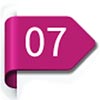
Snatch Grip RDL/Snatch Grip Deadlift
These two movements are final worthy mentions even though they are not strictly upper back exercises—at least, not directly. This is one of Dan John’s armor builders; a movement that makes the body, in conjunction with terrific back and grip bracing, work as “one piece.” Snatch-grip deadlifts are like standard deadlifts except that the grip is much wider.
How wide? I usually regard it as anything wider than the smooth rings on the bar: longer armed lifters will be closer to the collars while shorter armed lifters will be nearer to the smooth ring. Olympic lifting purists may moan about grip width, but I’m after increasing ROM and time under tension, not building a better snatch. I find that upper back and grip development happen very fast when performed diligently. In most cases, lifters will need to use straps to maintain their grip with heavier snatch-grip deadlifts.
I find that upper back and #grip development happen very fast when performed diligently, says @WSWayland. Share on XThe wide grip places the traps and lats under constant tension. Posterior chain development and improved hip and back extension are another positive aspect—I have written in the past how grapplers are often chronically overflexed. I’m not trying to “fix” anything here, but borrowing from Dr. Stuart McGill’s idea about creating tension in one area to alleviate it in another, snatch grip deadlifts seem to do much for T-spine discomfort. In the athletes I use them with, forcing extension is sometimes desirable.
The wider grip forces you into a lower position; almost into a full squat. This lower position also changes the position of your torso, thus requiring more of the emphasis on the entire back, hamstrings, and glutes, and forcing good extension. A word of warning, however: Those with poor mobility should probably skip this deadlift variation. Personally, I am a big fan of this in combination with heavy front squats as the two complement each other well, placing larger emphasis on posterior and anterior chains, respectively.
Sequencing Upper Back Training over a Training Cycle
Upper back work never gets much love from a sequencing standpoint; it is often added as an afterthought in a “corrective capacity” or as a counterweight to pressing work. There is no reason it cannot be a lead upper body movement, used in clusters or contrast and complex work. A simple contrast would be heavy rows combined with a catch release row, for example, and you could expand this into a full upper body complex.
Potentiation Clustered Rows
- 1. Barbell Row 3 x 1,1,1,1,1
- Rest 10s
- 2. Catch Release Row 3 x 1,1,1,1,1
- Repeat 1.
I generally use the compress cluster complex below to compress upper body work for time-poor athletes, so we can integrate pushing and pulling. I usually keep them separate to keep the quality higher.
Upper Body Cluster Complex
- 1a. Banded Barbell Row 3 x 1,1,1
- 1b. Barbell Bench 3 x 1,1,1
- 2a. Catch Release Row 3 x 1,1,1
- 2b. Clap Push-Up 3 x 1,1,1
You can draw out this change in the mode of exercise selection over training blocks depending on the goals of the athlete. The intensity of the eccentrics and isometrics means they will be primarily used in strength development; they can cause a lot of soreness due to high levels of stress on tissue.
Banded, catch only, and disadvantaged oscillatory rows still require high levels of force production but at high velocities, lending themselves as power options. This is also where you might employ Olympic lifting variations if you are so inclined, marring the explosive connection between upper and lower body.
Finally, catch release rows and advantaged rows work well in peaking and priming work because they lend themselves to high levels of excitability at low levels of force production. Athletes feel “switched on” after these movements.
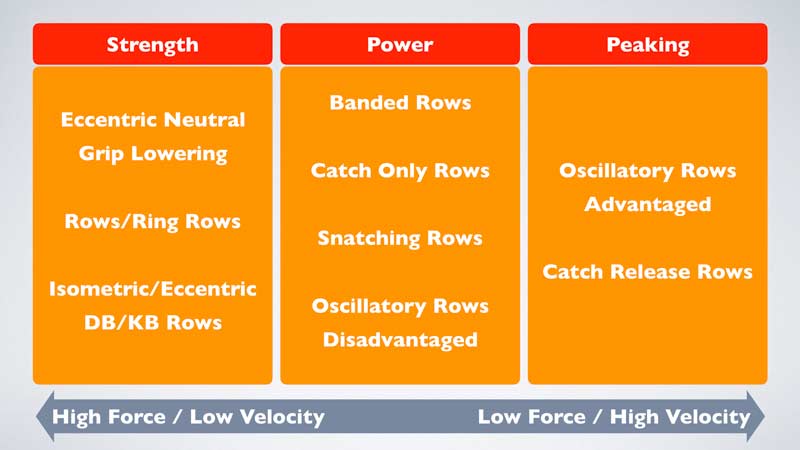
This broad approach would be cycled over weeks and months, or, as seen below, optimized every one to two weeks during a busy in-season, so that the focus undulates over the playing/training week. You can modify this for athletes playing weekend or midweek games.
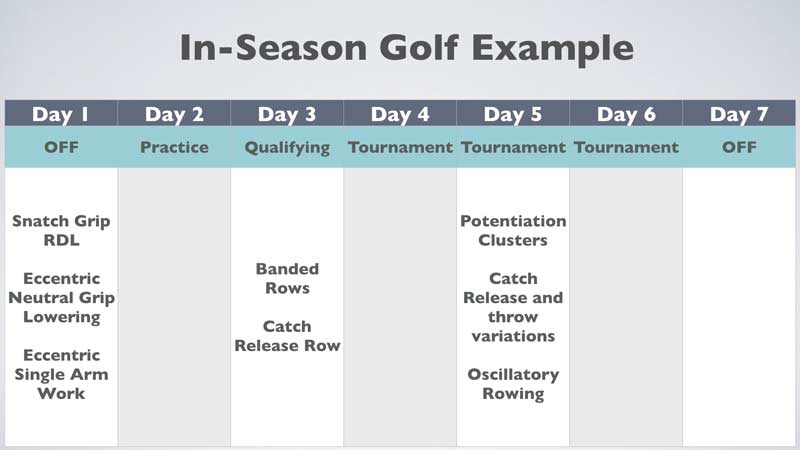
As you will notice, a recurrent theme in this schedule (Image 3) is the use of eccentric exercise in training the upper back. Eccentrics work particularly well in a sport with high limb velocities, as the back is a powerful protective decelerator. In addition, the ability to maintain “posture” in combative or contact sports is heavily tied to the ability to brace against an opponent trying to break t-spine position—think snap down in wrestling or posturing in MMA. This is something that eccentrics are very useful for teaching an athlete to maintain.
More Wisdom on the Benefits of Upper Back Training
The corrective hype we see espoused as an approach to upper back work means we see too much worry about kyphosis, posture, and scapular positioning in those who probably just need a consistent diet of heavy upper body pulling. Work on the latter, as the former will probably not be much of problem.
We can do better than upper back work that is mainly bodybuilding and/or functional exercise, says @WSWayland. Share on XIntensive upper back training will not open any secret doors or act as a key to performance. Some athletes will need specific approaches to upper back strength (i.e., baseball players), but the rest of the community need not adhere to the approach promoted by some coaches whose athlete populations require special care. Much of the approach I espouse is based on the work of pragmatic coaches getting results in the field. A lot of what we see proposed as upper back work is, by and large, bodybuilding and/or functional exercise, and I think we can go one better than that.
Since you’re here…
…we have a small favor to ask. More people are reading SimpliFaster than ever, and each week we bring you compelling content from coaches, sport scientists, and physiotherapists who are devoted to building better athletes. Please take a moment to share the articles on social media, engage the authors with questions and comments below, and link to articles when appropriate if you have a blog or participate on forums of related topics. — SF




